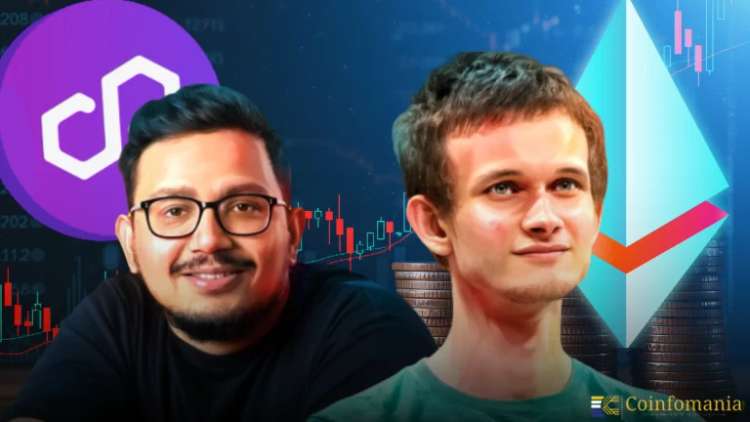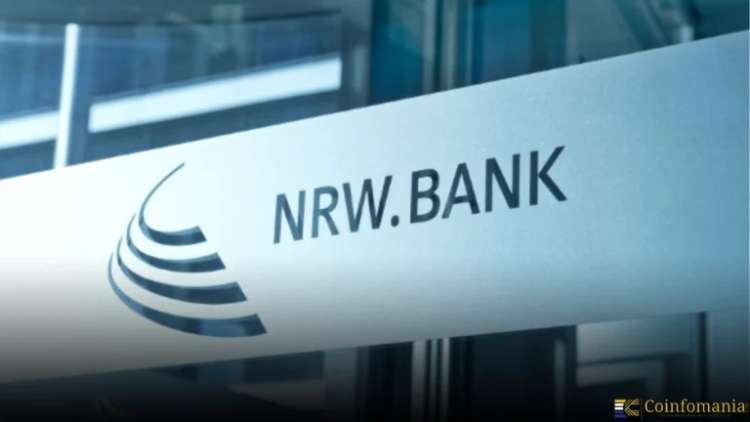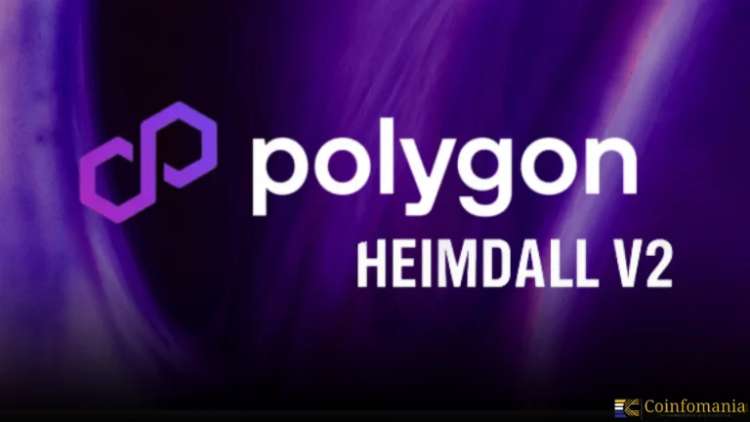MATIC
As of December 28, 2025, Polygon (MATIC) is trading at approximately 0.255 USD, reflecting a 2.85% increase from the previous close.
| Current Price | 24h Price Change | 7-Day Avg Price | Support Level | Next Resistance |
| $0.255 USD | 2.85% | $0.223 USD | $0.15 USD | $1.26 USD |
📈 Technical Analysis Summary
- Price Movement: The 2.85% increase indicates Bullish momentum; renewed investor confidence.
- 7-Day Average Comparison: Trading above the 7-day average ($0.223 USD); reinforces bullish trend; market is gaining strength.
- Support and Resistance Levels: Price is above support ($0.15 USD); confirms bullish base. Room for growth before hitting resistance ($1.26 USD).
- RSI Analysis: RSI at 67.26 indicates Neutral zone; balanced market.
- MACD Analysis: Flat MACD (+0.01); no strong directional bias.
📊 Market Sentiment
| Indicator | Value | Interpretation |
|---|---|---|
| RSI | 67.26% | Neutral; neither overbought nor oversold |
| MACD | +0.01 | Bullish; suggests upward momentum |
| Above 7-Day Avg? | Yes | Indicates bullish momentum |
| Above Support? | Yes | Suggests price stability above support. |
Polygon Price Prediction Preview
| Forecast Range | Prediction Trend |
|---|---|
| Daily | 📈 Bullish — Bitcoin is expected to maintain upward momentum short-term |
| Weekly | 📊 Moderate Gain — Steady growth expected; strong support holding |
| Monthly | 🚀 Bullish — MATICUSD could test $0.28 if momentum sustains |
| Yearly | 🧯 Uncertain — Macro factors may limit long-term upside for MATICUSD |
Related News

Sandeep Nailwal Hails UFC-Polymarket Deal Powered by Polygon
Polygon CEO Sandeep Nailwal is celebrating a major milestone this week after the UFC signed a multi-year partnership with Polymarket. The deal makes Polymarket the official and exclusive prediction market partner for both UFC and Zuffa Boxing. For Nailwal, the moment is personal. He shared that he’s a long-time UFC fan and highlighted that Polymarket […]
Shweta Chakrawarty
Author

Polygon Ethereum Tension Rises After Nailwal Questions Loyalty
Hanan Zuhry
Author

NRW.BANK Issues €100M Blockchain Bond on Polygon
Triparna Baishnab
Author

Polygon’s Heimdall v2 Upgrade Speeds Up Transactions
Triparna Baishnab
Author

Polygon’s Heimdall v2 Upgrade: A $MATIC Game Changer
Triparna Baishnab
Author
Matic Network was born in 2017 as Polygon, and it is a Layer-2 blockchain platform that increases the scale of Ethereum. By providing a faster and low-cost transaction with the compatibility of Ethereum’s ecosystem, it makes it possible for decentralized applications like DeFi, NFTs, and DAOs to be built on it. MATIC is its native token that runs the governance, staking features and uses it for transaction fees. With high-profile brands such as Disney, Nike, and Mastercard, Polygon’s ties to bringing blockchain to the mainstream are evident. As the aggregator of the aforementioned hybrid sidechain system, Polygon intends to offer a scalable, interoperable Web3 ecosystem through the utilization of such technologies as the ZK-rollups and become the cornerstone of decentralized innovation.
How Does Polygon Work?
Layer2 solution for scaling the Ethereum, resolving the problem of high transaction costs and slow transactions. So, it processes transactions on its own network and submits them in a batch to Ethereum’s mainnet by “checkpoints,” where a Merkle root of transaction hashes is committed using core contracts. Security is ensured at the same time, and high throughput is enabled. One of the methods by which Polygon functions is through a proof-of-stake (PoS) consensus mechanism, where validators stake MATIC tokens to validate transactions and earn rewards. It has an architecture that supports sidechains, ZK rollups and optimistic rollups and caters to developers’ needs. For example, Polygon PoS offers EVM compatibility, with Polygon zkEVM taking the security further with zero-knowledge proofs, its near-zero gas fees and block times of around 2.3 seconds.
Polygon and Other Cryptocurrencies
Ethereum gets differentiated in focus for scalability over Bitcoin (decentralized store of value using proof of work—PoW). On Polygon, you can get faster transactions (up to thousands per second) and cheaper (average is $0.015 per transaction) compared to Ethereum. It is a Layer 2 scaling solution competing with others such as Optimism and Arbitrum, but boasts different scaling options for users, thanks to Polygon CDK for custom Layer 2 chains. Polygon inherits the security of ethereum for standalone blockchains like Solana, but will be obsolete in the long run if ever Ethereum solves the issue of scalability. While its market position is tethered to the future of Ethereum, its interoperability and partnerships give it an edge.
Cryptocurrency | Consensus Mechanism | Transaction Speed | Average Fee | Primary Use Case |
Bitcoin | Proof-of-Work | ~7 TPS | ~$1-10 | Store of Value |
Ethereum | Proof-of-Stake | ~15-30 TPS | ~$0.5-20 | Smart Contracts |
Polygon | Proof-of-Stake | Thousands TPS | ~$0.015 | Ethereum Scaling |
Solana | Proof-of-History | ~65,000 TPS | ~$0.00025 | High-Speed dApps |
Technology Behind Polygon
Polygon’s technology is based on improving the scalability of Ethereum with a myriad of tools. The Layer-2 framework used by it does all the processing of transactions off Ethereum’s main chain and then settles them periodically for security. Key components include:
- EVM-compatible sidechain, Polygon PoS, allows Ethereum dApps to comfortably run at lower transaction costs and much faster transactions.
- The zero knowledge rollup (zkEVM), which aims to provide EVM equivalence while providing high security along with close to zero gas fees.
- Polygon Miden is a decentralized rollup, which means that transactions are executed locally and private data is stored privately.
- A toolkit for building custom Ethereum Layer 2 chains using ZK technology – Polygon CDK.
Proof of stake consensus on Polygon demands that validators stake MATIC tokens in order to secure the network. In January 2024, the project called AggLayer aims to aggregate ZK proofs across blockchains in order to make them more accessible to everyone. As of now, Polygon is healthy with around 2.44 trillion transactions and 1.17 million smart contracts already in deployment within its ecosystem.
Is Polygon a Good Investment?
As Polygon is the leading Ethereum scaling solution, it is an interesting investment, but has its risks. We could get some input from the cryptocurrency aisle on this. As a result, it does have a growing dApp ecosystem (over 28,000 contract creators) and relations with brands such as Starbucks and Instagram, indicating high adoption. As far as risks are concerned, there are scalability improvements on Ethereum, market volatility, and potential competition from other Layer 2 solutions. As a result, the crypto market is unpredictable, and the only thing investors can do is diversify and risk only what they can afford to lose.
Legal and Regulatory Considerations 2025
However, worldwide, as cryptocurrency regulations have changed since April 2025, Polygon has not been able to escape. Polygon’s operations in Europe might be affected by the EU’s Markets in Crypto-Assets (MiCA) regulation, which comes into effect in January 2025 and requires crypto-assets to be transparent, disclosed, and regulated. The pro-crypto stance of the Trump administration in the US, featuring an executive order for the formation of a regulatory working group indicating a lighter touch for regulators, yet pending stablecoin legislation (e.g. Clarity Act) could have implications for Polygon’s ecosystem. In Polygon, the rules in regard to taxation, AML compliance and licensing apply on a global level and should be followed by both users and exchanges. Other regulatory shifts could also change the value or usability of MATIC, so investors should stay apprised of jurisdiction-by-jurisdiction rules.
How to Buy and Trade Polygon?
Just like CRO, MATIC can be bought directly on centralized exchanges like Coinbase, Binance, or Gemini with fiat (USD, or EUR) or other supported cryptocurrencies (BTC or ETH). Uniswap is one of these decentralized exchanges that facilitate trading via wallets like MetaMask. Steps include:
- Select a provider: Find a reputable service provider (Bybit, Uphold).
- Complete KYC requirement and register & verify.
- Fund the account: At the moment, you can either fund the account with a fiat currency or with a crypto.
- You can place a market or limit order to buy MATIC.
- Trade: Use spot trading or derivatives, including CFDs, on IG International.
As far as tools are concerned when it comes to trading, OKX is solely platform with advanced tools, whereas eToro is a platform that supports MATIC investment via fiat. Also, always enable two-factor authentication and use secure platforms.
Polygon Wallets and Security
For storing MATIC, Polygon supports a variety of wallets in such a way that the user has control of private keys. Popular options include:
- Trust Wallet, AlphaWallet and Zengo have ease of use and native support for Polygon.
- Hardware wallets are represented by the Ledger and Trezor devices, which store your crypto offline for security reasons.
- Multi-Chain Wallets: MetaMask and Phantom support Polygon alongside other blockchains.
Security features are self-custody, secure enclaves, and multi-party computation (MPC). To mitigate such risks as phishing and hacks, users should verify wallet sources, not share private keys, and hold most into a hardware wallet.
How to Secure Your Polygon Holdings?
Securing POL involves robust practices:
- Use Trusted Wallets: Trust Wallet, AlphaWallet or hardware wallet such as Ledger.
- Store Keys Offline: Private keys should be stored offline in a secure place such as a hardware or software wallet vault.
- Most exchanges and wallets should be enabled with 2FA or activate 2FA.
- Do not fall victim to Phishing: Check URLs and steer clear of unsolicited messages asking for wallet info.
- Wallet software should regularly as well be updated to fix vulnerabilities.
- Regularly keep a check on unauthorised transactions.
- It provides for multi-signature wallets, which require multiple approvals for high-value transactions.
These also help reduce the risk associated with hacks, scammers and software-specific flaws while allowing the safe storage of MATIC.
Polygon Adoption and Use Cases
Adoption across industries has taken place due to Polygon’s scalability. Key use cases include:
- Lending and trading lend themselves well to the low fees of Polygon, with examples being found on Aave and SushiSwap.
- Polygon has NFT marketplaces, restaurants and digital collectibles such as Disney’s collaborations.
- High-throughput gaming supports blockchain games and Metaverse projects.
- Partnerships with Mastercard and Mercedes-Benz are looking into the scope of loyalty programs and supply chain management.
- Examples of initiatives with Instagram and Reddit involve social media and Web3: they enable the inclusion of blockchain features.
The ecosystem of Polygon is thriving with more than 12.8 billion in NFT sales volume, as well as partnerships with Google Cloud, and it is leading the robust Web3 adoption.
Polygon’s Future Outlook & Growth Potential
Based on the technological improvements and the ecosystem growth, the future of Polygon looks rather bright. With MATIC, the integration with staking and governance is made possible, and transition to MATIC gives it more utility, further scaled up by Polygon 2.0 and ZK technology. The key (or rather challenging) ones are competition from Optimism and Arbitrum as well as the fact that Ethereum’s own upgrades could make Polygon less relevant. However, the partnerships it has, the support it gives to its developers, and 2.44 billion transactions paint a picture that it may still be a serious player in blockchain scalability.
Pros and Cons of Investing in Polygon
Pros:
- Scalability Leader: Enhances Ethereum with fast, low-cost transactions.
- Robust Ecosystem: Supports thousands of dApps and major brand partnerships.
- Growth is driven by innovative Technology: ZK-rollups, Polygon 2.0.
- Interoperability: Seamless integration with Ethereum and other chains.
- Strong Community: Backed by developers and a vibrant user base.
Cons:
Risks obsolescence because if Ethereum scales independently, we are an Ethereum dependency.
- What varies is market volatility, due to the crypto markets it operates in.
- Evolving Global Regulations: Regulatory uncertainty due to evolving global regulations may affect operations.
- It competes with other Layer-2 solutions.
- Properties of Sentiment Risks: Market sentiment can push prices up and down, massively.
Final Thoughts
A force to be reckoned with in the world of blockchain, Polygon acts as a vital link between the current model of Ethereum, which is struggling with scale issues, as well as providing a flexible and interoperable platform. It also has extensive dApp ecosystem, a partnership with global brands and its MATIC token, all adding up to excellent growth potential. However, investor risks exist in the Ethereum dependency, market volatility, as well as potential regulatory shifts. As a result, the ongoing innovations of Polygon 2.0 and the supporting community make them perfectly positioned to drive the adoption of Web3. Given that Polygon’s future lies in both its technological advantage and the wider crypto landscape, anyone thinking of investing should do their research and be sure to manage risk.